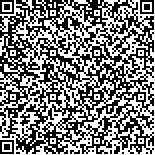下载中心
优秀审稿专家
优秀论文
相关链接
摘要

近年来DMSP/OLS夜间灯光数据被广泛应用到人类活动强度及城市化进程的研究中,但由于OLS传感器的限制导致,在夜间灯光强度过高的城市中心区,NTL数据存在较为明显的饱和现象。这种饱和现象直接掩盖了城市中心区内部的灯光差异、细节,限制了DMSP/OLS数据在城市中心区的应用。目前缓解灯光数据饱和的方法主要分为:辐射定标法和非辐射定标法。其中辐射定标法虽精度较高,但定标算法复杂,干扰因素多,目前只有部分定标产品;非辐射定标法利用辅助数据(包括自然因素指标、社会经济指标)构建函数模型,对饱和区稳定灯光数据进行去饱和处理,具有较好修正效果。本文在总结VANUI(基于NDVI所构建)、EANTLI(基于EVI所构建)等去饱和指数的基础上,利用地理探测器对NDVI、EVI和UNL(单元路网长度)进行因子探测,量化对稳定灯光数据的解释力,提出了UNLI指数。为了验证UNLI、EANTLI及NTL数据之间的差异,通过“饱和区灯光强度细节刻画程度”、“UNLI、EANTLI与辐射定标数据RCNTL相关性分析”、“耗电量及GDP等经济指标回归拟合优度”3个方面进行比对分析,可以看出:(1)UNLI、EANTLI在修正过饱和灯光数据上均有较好的效果,但UNLI对饱和区灯光强度差异的刻画更加准确;(2)UNLI较之VANUI、EANTLI,可以突破空间分辨率的限制,增加灯光强度细节差异;(3)在灯光强度最高的饱和区,UNLI在与RCNTL的相关性最高,但随着灯光强度的减弱,UNLI、EANTLI与RCNTL的线性回归判断系数R2逐渐接近,UNLI与RCNTL相关性优势正逐渐丧失;(4)在对耗电量、GDP的拟合分析中,引入UNLI指数的“EANTLI&UNLI”的分段式修正模型,充分发挥EVI、UNL各自的优势,具有最优的拟合效果(RAdj2=0.873)。实验结果表明,本文引入的修正夜间灯光饱和方法,能够有效的缓解城市中心区的灯光数据饱和问题,并在细节刻画和空间分辨率上有较为明显的提升,可以更精确的从灯光强度的角度反映城市结构的特征。
DMSP/OLS nighttime light data have been widely applied to reveal the intensity of human activities and the process of urbanization.However, the limitation of sensors leads to a serious saturation problem in the NTL data,especially in the city center area of high light intensity. Saturated nighttime light data cover the differences and details of light intensity in the central area of a city and reduce the application scenarios of DMSP/OLS data.The method for alleviating the saturation of light data is mainly divided into radiometric calibration and non-radiometric calibration. Although the radiometric calibration method achieves high precision, the complex calibration algorithm and interference factors lead to a low data output rate. The non-radiometric calibration method uses auxiliary data (including natural factors, social indicators, and economic indicators) to construct the function model and thereby establish correct saturation data.We use GeoDetector to identify the factors of Normalized Difference Vegetation Index (NDVI), Enhancel Vegetation Index (EVI), and Unit Network Length (UNL) and propose the unit network length-adjusted (UNLI) NTL Index after quantifying the explanatory power of stable light data. Furthermore, we evaluated the capabilities of EANTLI and UNLI to eliminate saturation through the “detailed description of the degree of light intensity in the saturation area,” “correlation analysis of UNLI, EANTLI, and (RCNTL) radiometric calibration data,” and “goodness of fit of power consumption and GDP”.Both UNLI and EANTLI yield good results in the modified saturation data,but UNLI achieves greater accuracy in describing the difference in the light intensities of the saturation area. UNLI can break through the limitations of spatial resolution and increase the intensity of light detail differences. In terms of the light of the highest intensity saturation region, UNLI is closely correlated with RCNTL. However, with the decrease of light intensity, the linear regression coefficient R2 of the UNLI,EANTLI and RCNTL gradually approached, and the fitting advantages of UNLI and RCNTL is lost. In the fitting analysis of power consumption and GDP, the piecewise calibration model of “EANTLI&UNLI” can maximize the advantages of EVI and UNL, which has the best fitting effect (adjusted R2=0.873).In this study, we proposed a new method to correct the saturation of night light data. The new method can effectively eliminate the saturation of native NTL in urban central areas. Compared with previous correction methods, the new method is highly advantageous in terms of light intensity detail and spatial resolution. Thus, the proposed method can accurately reflect the characteristics of urban structure from the perspective of night light luminance.

